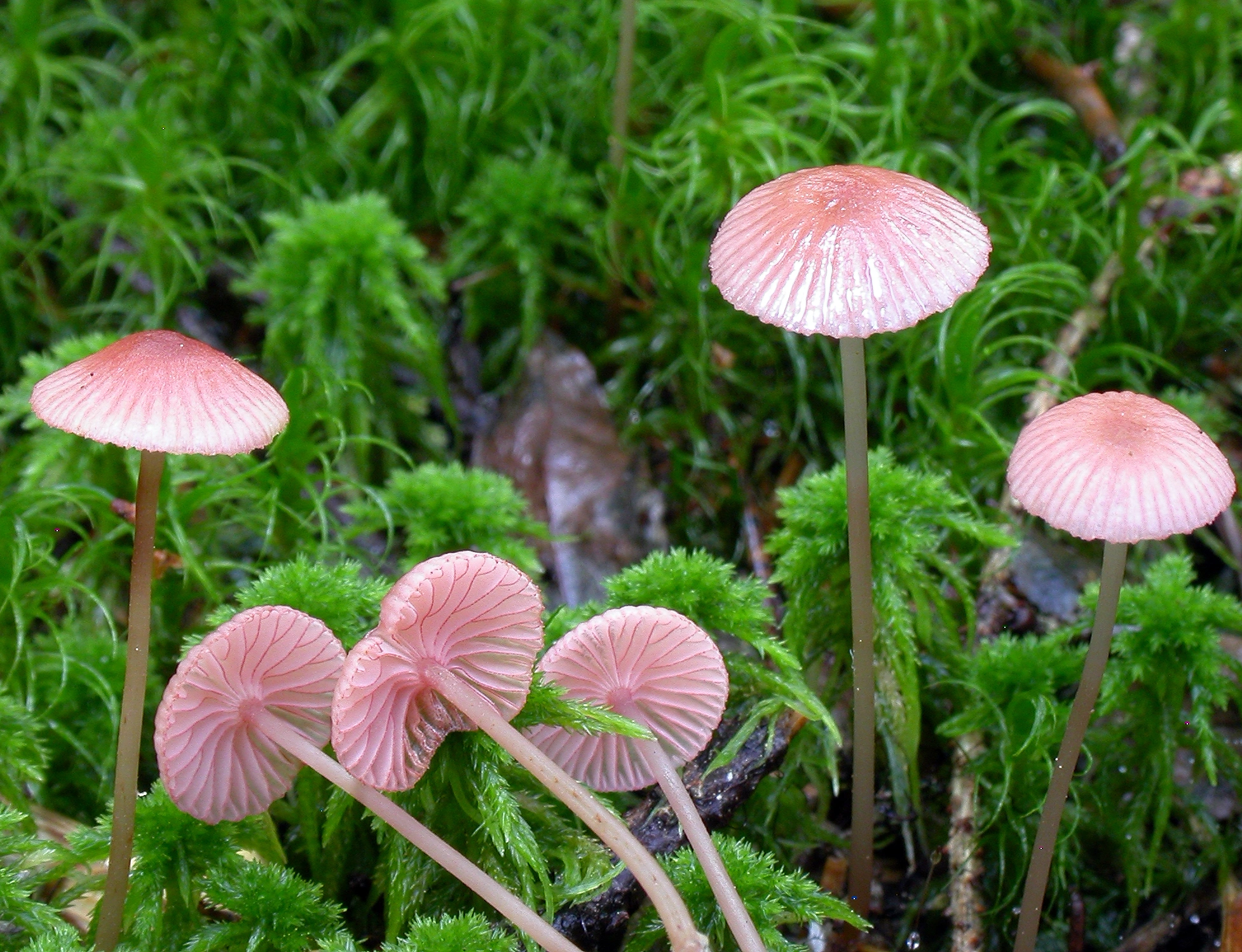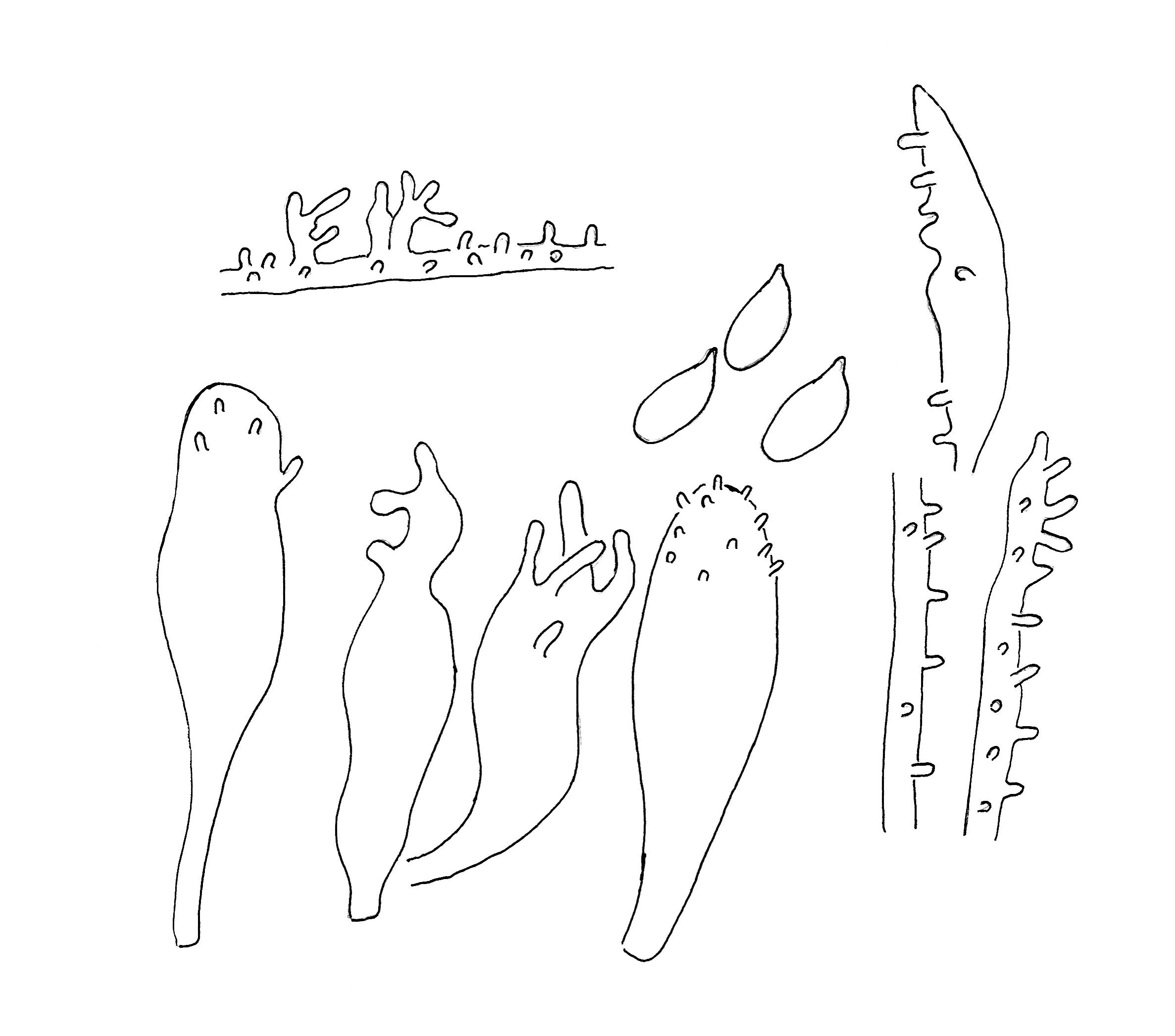Mycena rosella
Mycena rosella
- Innhold
- Description
- Ecology and distribution
Description
Hyphae of the pileipellis, cheilocystidia, spores, and hyphae of the cortical layer of the stem with terminal cells.
Cap 5-20 mm across, parabolical, convex to almost plane, with a small umbo or somewhat depressed, sulcate, translucent-striate, glabrous, bright pink, salmon pink to brownish pink, usually darker at the centre. Gills 15-18 reaching the stem, broadly adnate, somewhat decurrent with a short tooth, dingy pink or pale pink, minutely punctate with reddish dots (pleurocystidia), the edge bright violet red or brownish red. Stem 20-50 x 0.5-2 mm, cylindrical, pruinose, glabrescent, in young specimens dark brown at the apex and paler brown below, then reddish brown, becoming pale pink, yellowish pink to pale pinkish brown, the base densely covered with long, coarse, flexuous, yellowish to whitish fibrils. Odour and taste indistinctive. Basidia 25-33 x 6.5-9 µm, clavate, 4-spored. Spores 7.5-10 x 4-5 µm, Q = 1.6-2.3; Qav ˜ 1.9, pip-shaped, amyloid. Cheilocystidia 25-80 x 4.5-18 µm, forming a sterile band, clavate to fusiform or more rarely somewhat irreularly shaped, with red contents, smooth or covered with few to fairly numerous, unevenly spaced, simple or more rarely furcate, cylindrical excrescences 1.5-10 x 1.5-5.5 µm. Pleurocystidia fusiform, smooth, with red contents. Lamellar trama dextrinoid. Hyphae of the pileipellis 2.5-10 µm wide, sparsely to densely covered with warts and cylindrical excrescences 1-2.5 x 1-2 µm, tending to be somewhat gelatinized. Hyphae of the cortical layer of the stem 2-4.5 µm wide, smooth to sparsely covered with cylindrical excrescences; terminal cells inflated 5.5-12.5 µm wide, covered with warts or cylindrical excrescences. Clamps abundant in all tissues.
Ecology and distribution
Growing exclusively in coniferous woods, often in large groups on the needle beds. Autumn. Common all over the country north to Troms.

